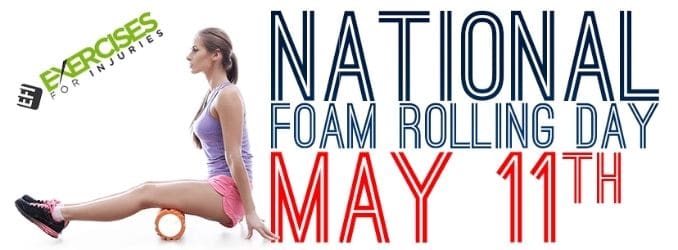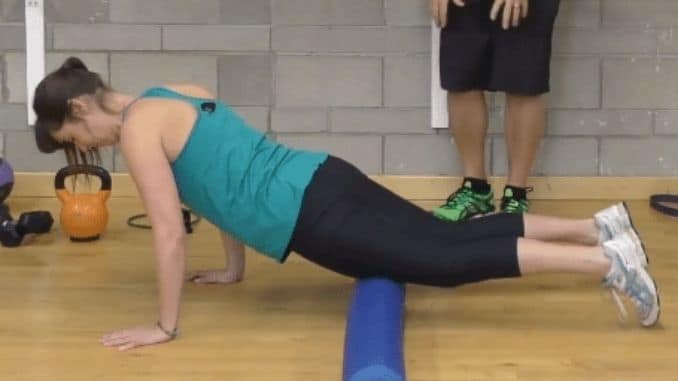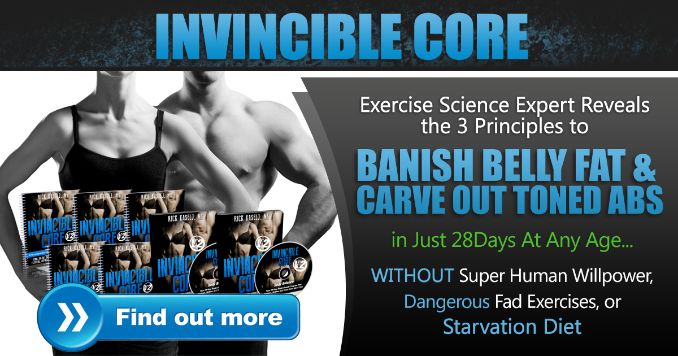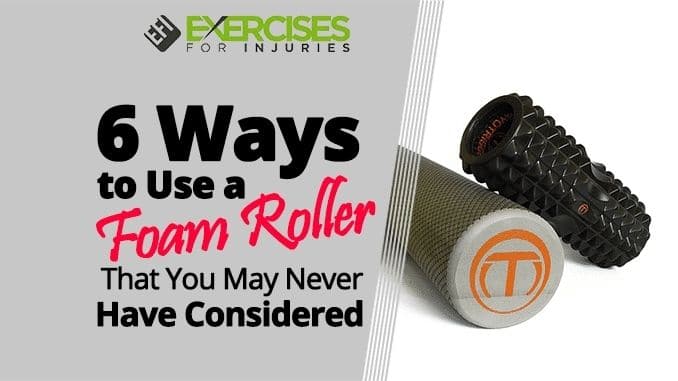
National Foam Rolling Day is observed annually on May 11.
If you’ve been following ExercisesForInjuries.com for a while, you’d notice that I often utilize foam rollers. It is an excellent self-massage and trigger point tool to help overcome injury and pain.
The foam roller is arguably the most versatile and beneficial piece of affordable, home gym equipment ever to hit the fitness market. You can find these in various sizes, at your local mass merchandiser, an online shop, sporting goods retailer or ― if you’re lucky―a yard sale this summer. They don’t cost much. However, if you know how to use them, foam rollers can save you loads of money on massage therapy and personal training sessions.
CLICK HERE to watch the YouTube video.
Choose the Right Foam Roller for Your Particular Needs
First, let’s note that size matters when it comes to foam rollers, and color does as well. As far as width, most foam rollers are a standard 6 inches in diameter. Length is where they vary. The shortest rollers are 12 inches long and are perfect for people who travel and want to bring along their roller. They’ll fit in most carry-on bags or backpacks. If your gym doesn’t stock rollers for member use, the 12-inch model will fit in your duffel bag for easy transport.
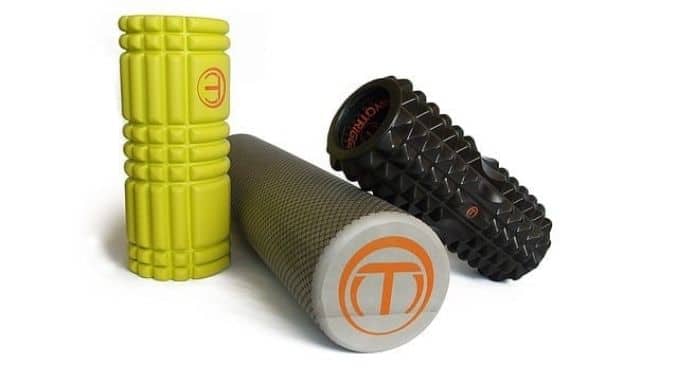
Also worth a mention here is the half-round roller. As its name suggests, the half-round roller is flat on one side and rounded on the other. It is recommended for beginners or people without a lot of muscle tone or control. Generally, a half-round roller is helpful for folks who want to work on balance and coordination, without the added challenge of keeping a full round roller steady.
Most Foam Rollers Are Color-coded
Much like mattresses, foam rollers | 404 come in a variety of firmness levels to suit the particular needs of the consumer. The softest rollers are normally white. Green and blue rollers typically have medium firmness, and the black ones are generally the densest. Consequently, the softer, white rollers are known to lose their shape after a few months of regular use. So choose a firm, black roller if you plan to use it heavily.
Fancy Foam Rollers Aren’t Necessarily Better Foam Rollers
As with any popular product, there will always be vendors out there claiming that their updated and improved, rainbow, sparkled foam roller yields superior results. You’ll find several, newfangled, foam rollers out there that have bumps, waves and ridges. Most of them probably work just fine. In general, however, foam rollers work well because of their simple design. There’s no real need to complicate things or spend a fortune on the latest and greatest. In fact, some thrifty ― don’t say cheap ― trainers make their own foam rollers with a $2 piece of PVC pipe and a yoga mat taped around the outside.
Foam Rollers aren’t just for rolling out your shins
Foam rollers | 404 are excellent for preventing shin splints, but they also do well to roll out sore muscles after a workout. Here’s a list of six ways to use a foam roller that you may have never considered.
1. Isolate the scapula
Kae Etchegoin, president of DK Body International in Las Vegas, Nevada, recommends using a full size ― 36 inch ― firm, foam roller to isolate the scapula and release the muscles in your back. Etchegoin instructs her clients to place the foam roller on a mat and lay on it, with the roller directly under and parallel to the spine, knees bent and feet flat on the mat. She suggests lifting the right arm up and over the head while keeping the other arm down, then alternating.
Etchegoin says, “This exercise provides a deep stretch and isolates the scapula from the rest of the shoulder muscles. It also allows for a release of the back muscles. People don’t release the back muscles very often. So this is a really nice stretch.”
2. Bench Press
While you’re in the above position to isolate the scapula ― knees bent, lying supine with the foam roller lengthwise, directly under the spine ― use hand weights to bench press. Push the weights up, at the same time, then lower the weights to your mid-chest. Keep your feet on the mat, shoulder-width apart, and your tailbone on the foam roller through the entire motion.
Bench pressing while on the foam roller is one of the best ways to work multiple muscle groups simultaneously. You exercise the upper body, chest and triceps with the bench press action while engaging the core, glutes and abdomen to keep the foam roller stable.
3. Push-ups
Another helpful way to use your foam roller is for slightly inclined push-ups. Push-ups on a foam roller will engage your core while strengthening your chest, shoulders and triceps.
Choose a medium or firm roller for this exercise. Begin by kneeling on the mat with your foam roller lying horizontally in front of you. Position your hands on the roller, in the same way as if you were planning to do push-ups on your mat. With your core fully engaged, straighten one leg at a time, until you are in a normal push-up position and your body forms a straight line from your shoulders to heels. Bend your arms to lower your sternum to the foam roller, then back up.
Push-ups
4. Side Roll Push-up
Flip the roller to a horizontal position, parallel to your mat. And place it to the left of your body. Start with the knees down in a modified push-up position. Then put your left palm on the roller and your right hand stationed as if you were doing a traditional push-up. Lower your upper body to the mat, with your right arm as your left arm is lowered flat and the foam roller makes its way from the palm of your hand to just above the wrist. Push back up with your right arm, as you allow the roller to work its way from the wrist, back out to the fingertips. Alternate sides with the roller.
As you become familiar with the motions, or if you’d like more of a challenge, straighten the legs from the modified to a traditional push-up stance.
5. Push-up helper
Push-ups are an especially effective exercise. But not everyone is strong enough to perform them correctly. While doing a push-up halfway without touching your nose to the floor might have some benefit, it won’t actually help you get better at push-ups. That’s where the ever-practical foam roller comes in handy.
Modify your push-up by placing a foam roller, horizontally, on the mat about 2 inches below your knees. Keep your knees on the roller while you perform a full range, standard push-up – nose to the ground.
Once you’re able to do plenty of push-ups with your foam roller below the knee, try practicing push-ups with the foam roller a little lower down at the mid-shin. Likewise, when the mid-shin adjustment has become too easy, you’re ready for full push-ups. Because you’ve trained your muscles to perform full range push-ups, instead of repeatedly going halfway down, you’ll have perfect, push-up form.
6. Planking
Position the foam roller horizontally across your mat. Get into a forearm plank posture, with the roller about 2 inches above the knee joint and your feet pointed and hovering a few inches off the mat. Move your body backward gently as the foam roller rolls forward. Stop rolling about 2 inches below your hip joint. Then, move back to 2 inches above the knee and so on for 30 to 60 seconds.
Planking on a foam roller helps you challenge your body with the added obstacle of instability. The instability requires you to engage more muscles than usual, to keep your balance. Practicing the foam roller plank will, ultimately, help you build stronger muscles.
A foam roller is a very effective and easily acquired tool that can aid your workout immensely. The myofascial release provided by foam rollers is more than enough reason to have one lying around your home gym. But when you start getting creative with the foam roller, it’s easy to find multiple ways to turn this giant packing peanut into a seriously beneficial piece of fitness equipment.
If you’re looking to add a little variety into your training routine, and you don’t want to shell out loads of cash for a piece of gym equipment that may or may not end up collecting dust in the spare bedroom, hit up your local store for a foam roller and give these six exercises a try.
If you are looking for ways to unlock your fat-burning potential to obtain clean-cut and defined abs, then click here to check out the Invincible Core program, here!
Take care!
Rick Kaselj, MS

